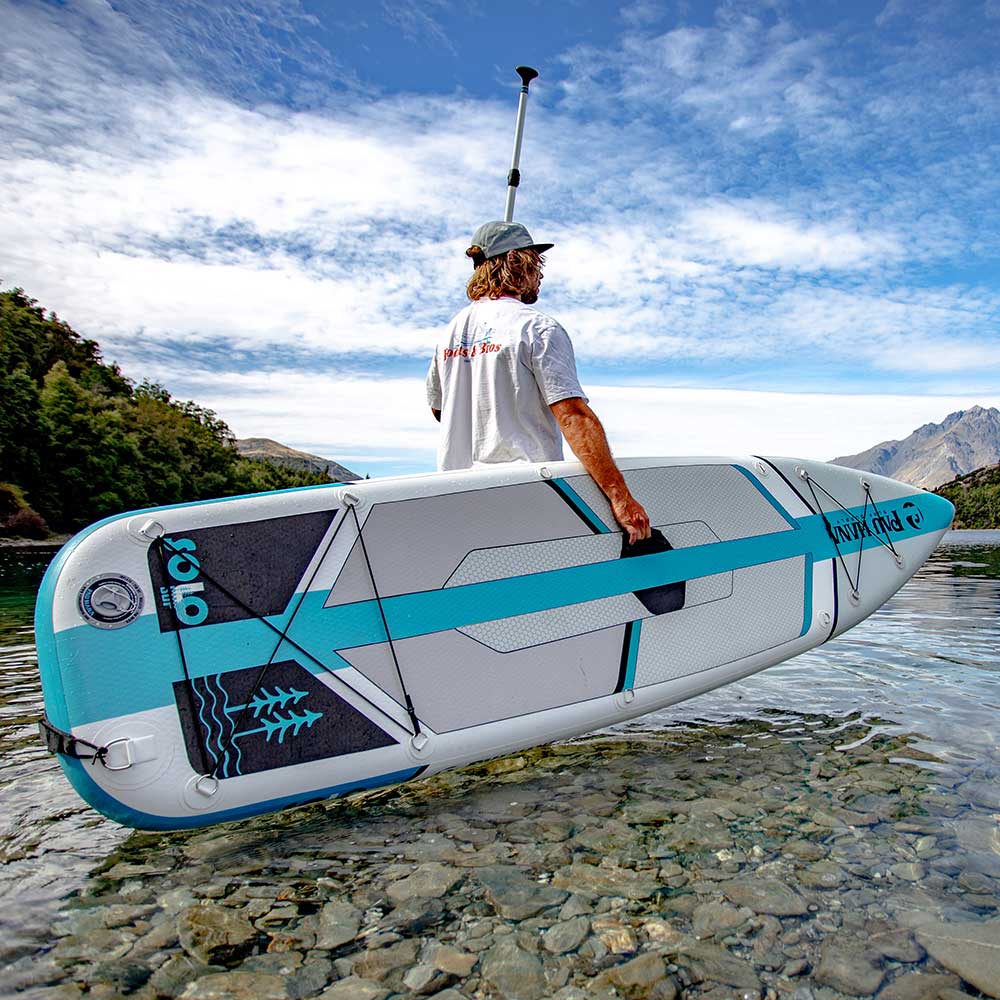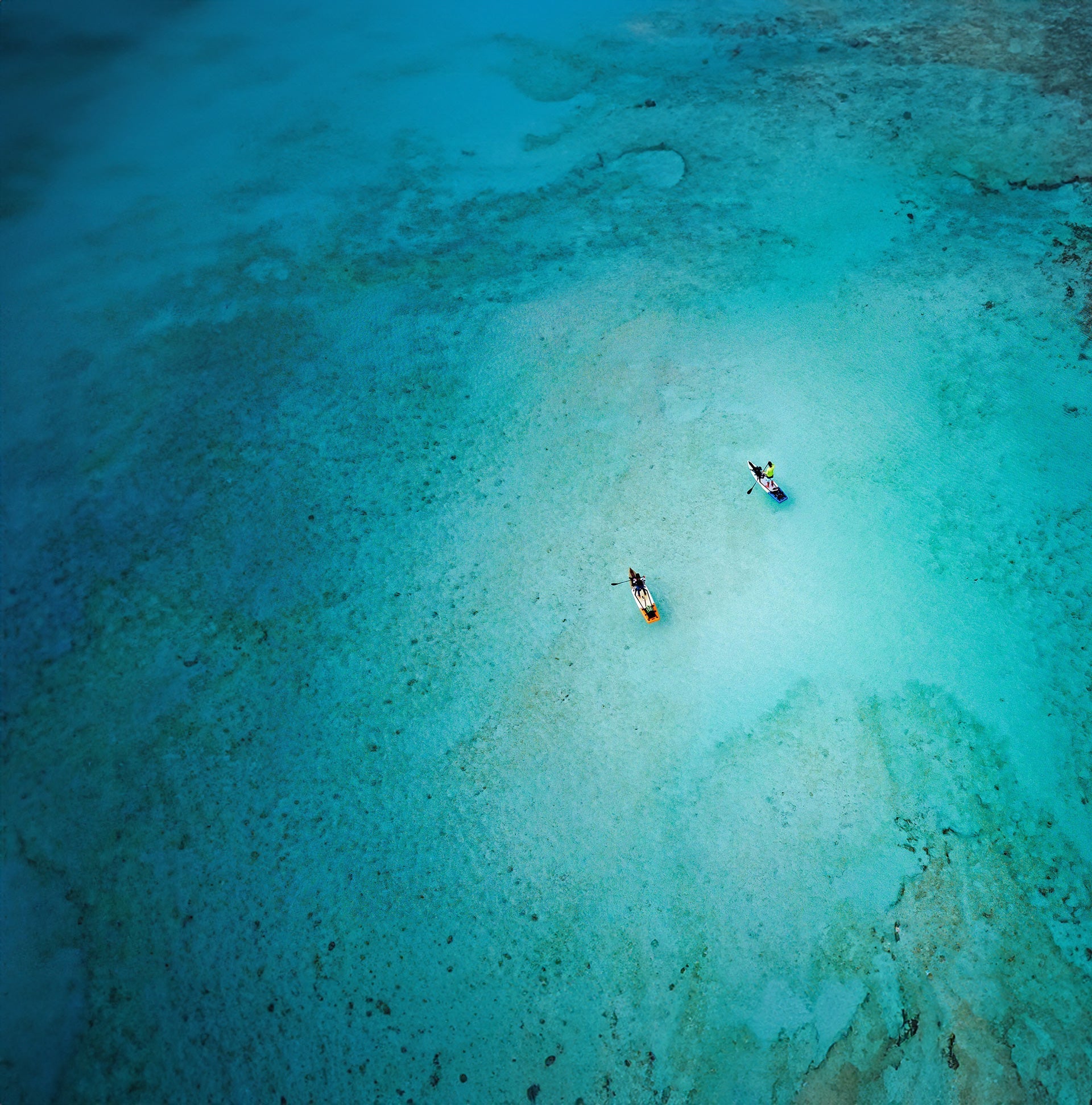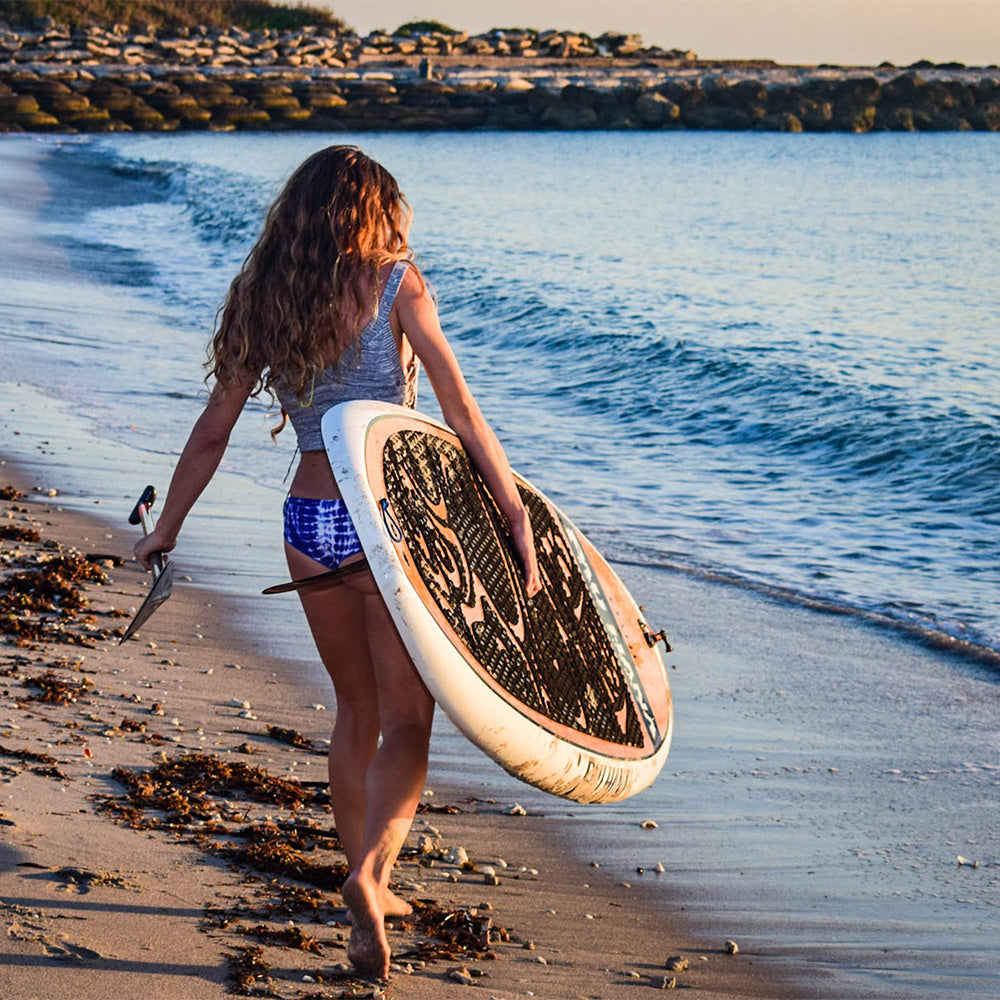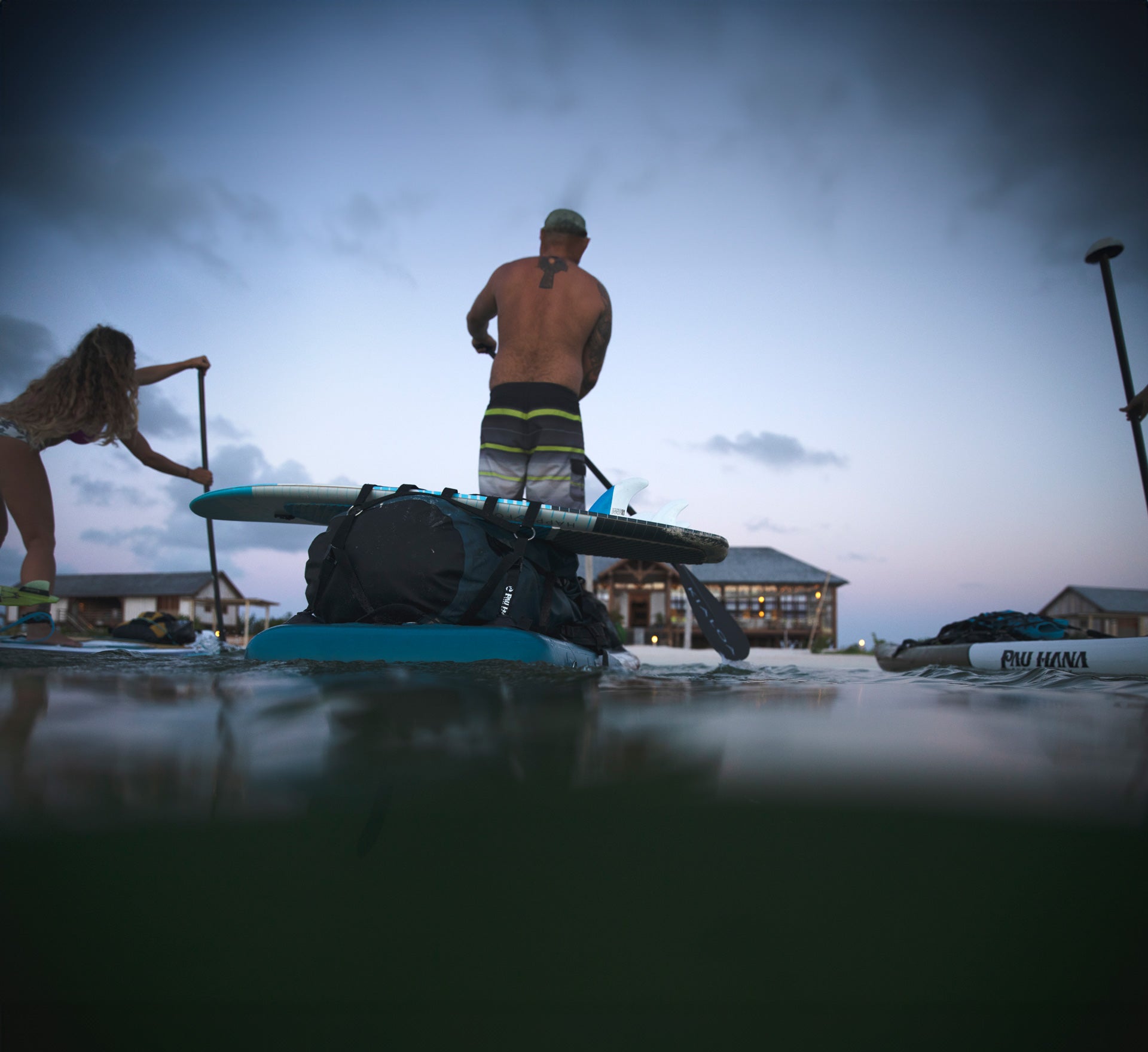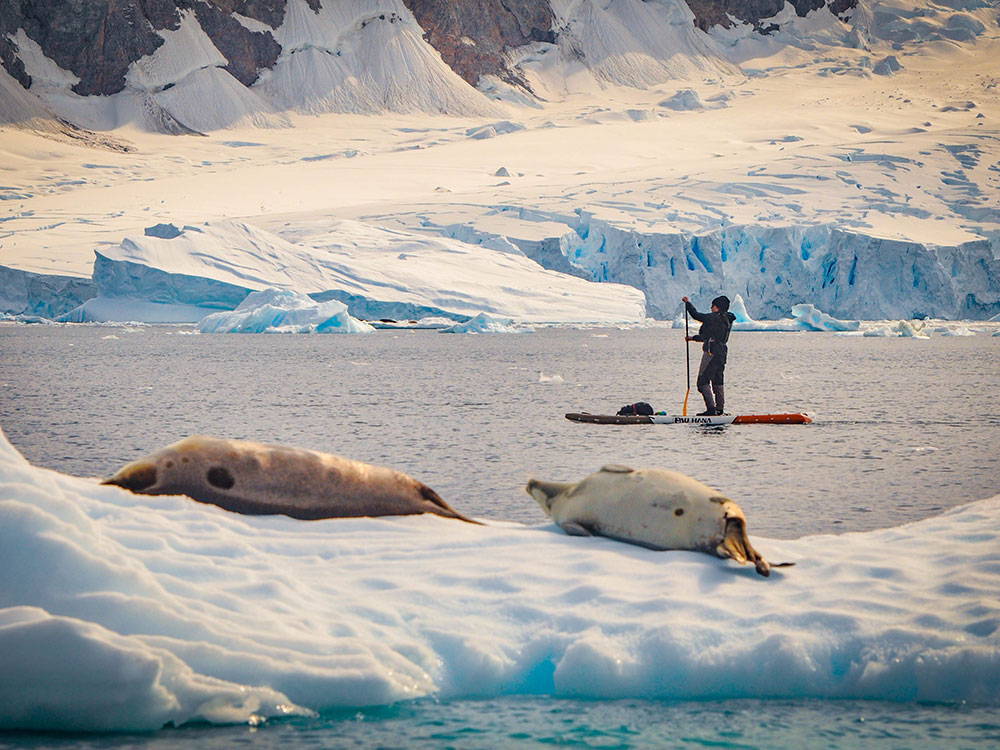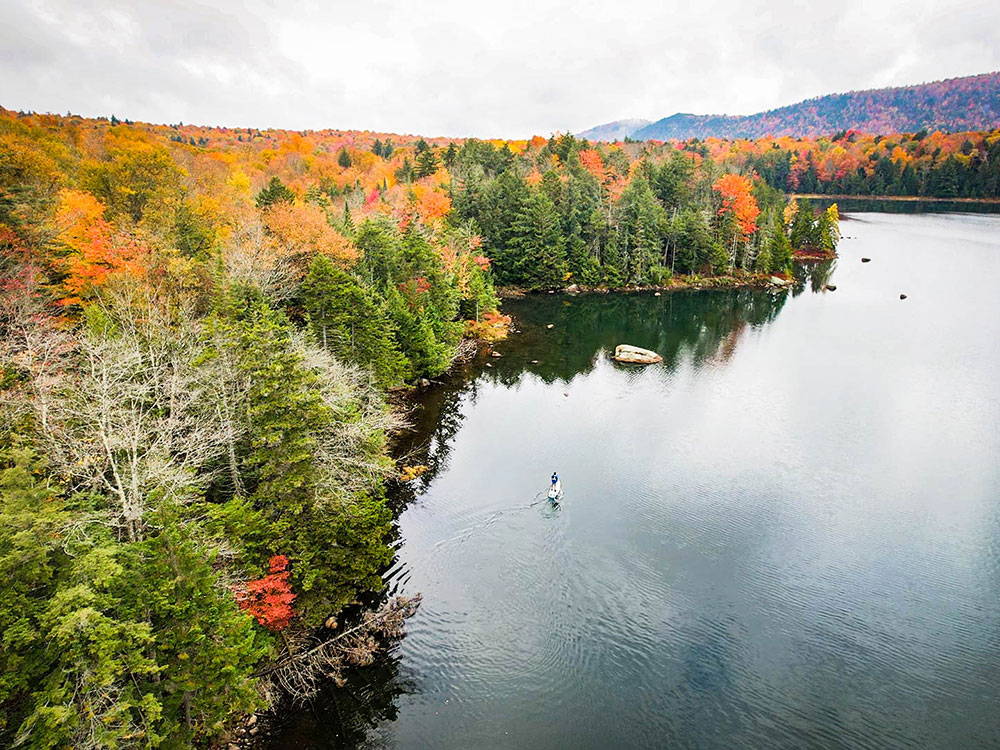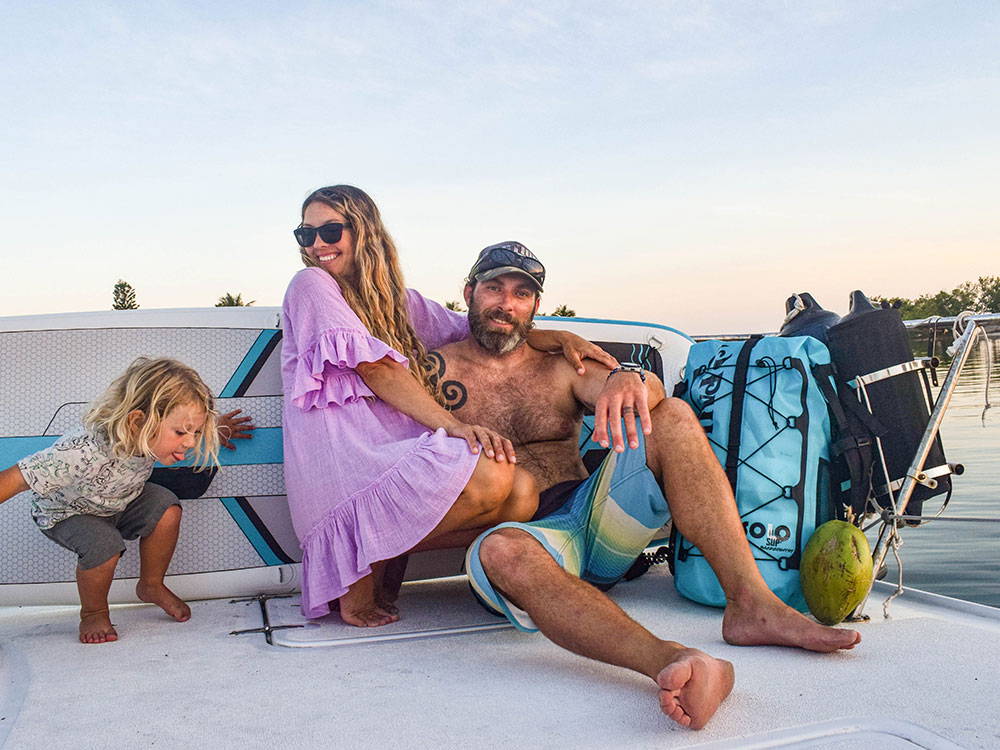As the temperatures drop and frost kisses the shoreline, it's time to layer up and lean in - winter paddleboarding season is calling! With the right gear and a little bit of prep, the cold months can transform into your favorite time to hit the water. Trust us, the magic of gliding past ice-dusted shores and spotting wildlife that summer paddlers never see? Totally worth the extra effort.
At Pau Hana, we believe every season is paddle season - you just need the right kit. Here's our ultimate guide for what to wear paddleboarding in winter to keep your stoke high and your toes cozy.

Winter paddleboarding has its own kind of magic. The waters are often glassy and still, the crowds have thinned out, and you'll likely spot wildlife that's more active in the cooler months.
Why Paddleboard in Winter? (Besides the Bragging Rights)
Winter paddleboarding has its own kind of magic. The waters are often glassy and still, the crowds have thinned out, and you'll likely spot wildlife that's more active in the cooler months. Plus, the peacefulness of a winter paddle feels like a secret you can't quite believe you're lucky enough to know.
But heading out in the cold without the right gear? That’s a fast track to frozen fingers and zero fun. So let’s talk essentials.

Top Tips: What to Wear Paddleboarding in Winter
1. Dry Suits for the Win
If you're serious about winter paddleboarding, a dry suit is your best friend. Unlike wetsuits, which let water in and then trap your body heat, dry suits keep you completely dry - so you can layer up underneath to match the day's conditions.
Bonus: no more awkward parking lot shimmies trying to wriggle out of a soaking wetsuit. Just peel off your dry suit and cruise home with your dignity (and body heat) intact.
Pro tip: Layer up under your dry suit with moisture-wicking base layers (think wool or polyester, never cotton).
2. Base Layers Matter
When it comes to what to wear paddleboarding under a dry suit, merino wool is pure gold. It’s warm, naturally antibacterial (goodbye post-paddle stink), and still insulates even when damp. If wool’s not your thing, opt for a synthetic alternative - just skip the cotton. Once wet, cotton zaps heat faster than a sunset disappears on a winter evening.

3. Keep Hands, Head, and Feet Toasty
Hands: Neoprene gloves or pogies (paddle mitts that attach directly to your paddle shaft) keep your hands dry, out of the wind, and nimble. Pogies are awesome because they keep the chill off while still letting you feel the paddle directly.
Head: A tuque (beanie) or thermal headband is clutch. Most of your body heat escapes through your head, so cover it up!
Neck: A simple neck gaiter or Buff will help warm the air before it hits your lungs.
Feet: Wetsuit booties are the go-to. Neoprene traps a thin layer of water, then your body heats it - giving you a natural foot-warmer while also giving you great traction on your board.
4. Don’t Forget the Extras
Changing Robe: Basically a towel shaped like a poncho, but it feels like a mini-cabin when you're changing in the cold. Sometimes we even rock ours all the way home - no shame in the warm game.
Hot Flask: Bring a thermos of tea or hot chocolate. Warm hands + warm soul = better session.
Wooly Socks and Mittens for After: Trust us, your future self will thank you.

Safety First, Always
PFD: Your personal flotation device isn't just summer gear. Cold water zaps energy fast, so a PFD is even more critical when winter paddleboarding.
Leash: Always stay connected to your board.
Hydration: It's easy to forget in the cold, but you're still working hard out there. Bring water!
Final Stoke
With the right layers, a little planning, and a hearty sense of adventure, winter paddleboarding opens up a whole new world of beauty and solitude. Gear up, pack your best smile, and savor those crisp, quiet sessions that most people only dream about.
Because here at Pau Hana, no season can stop the glide.
By Jennifer Chrimes


